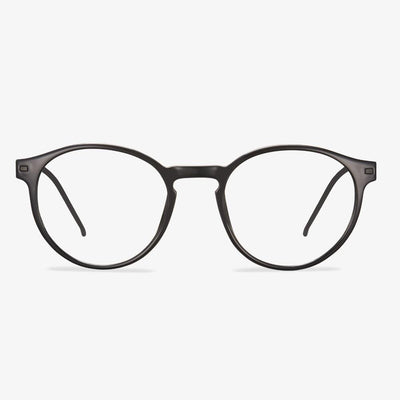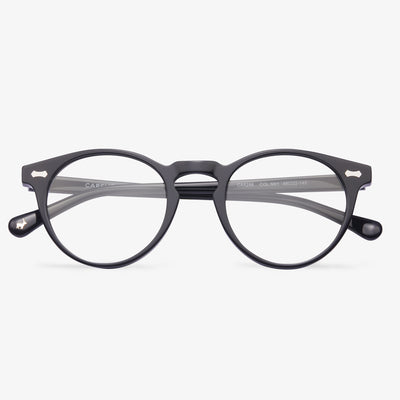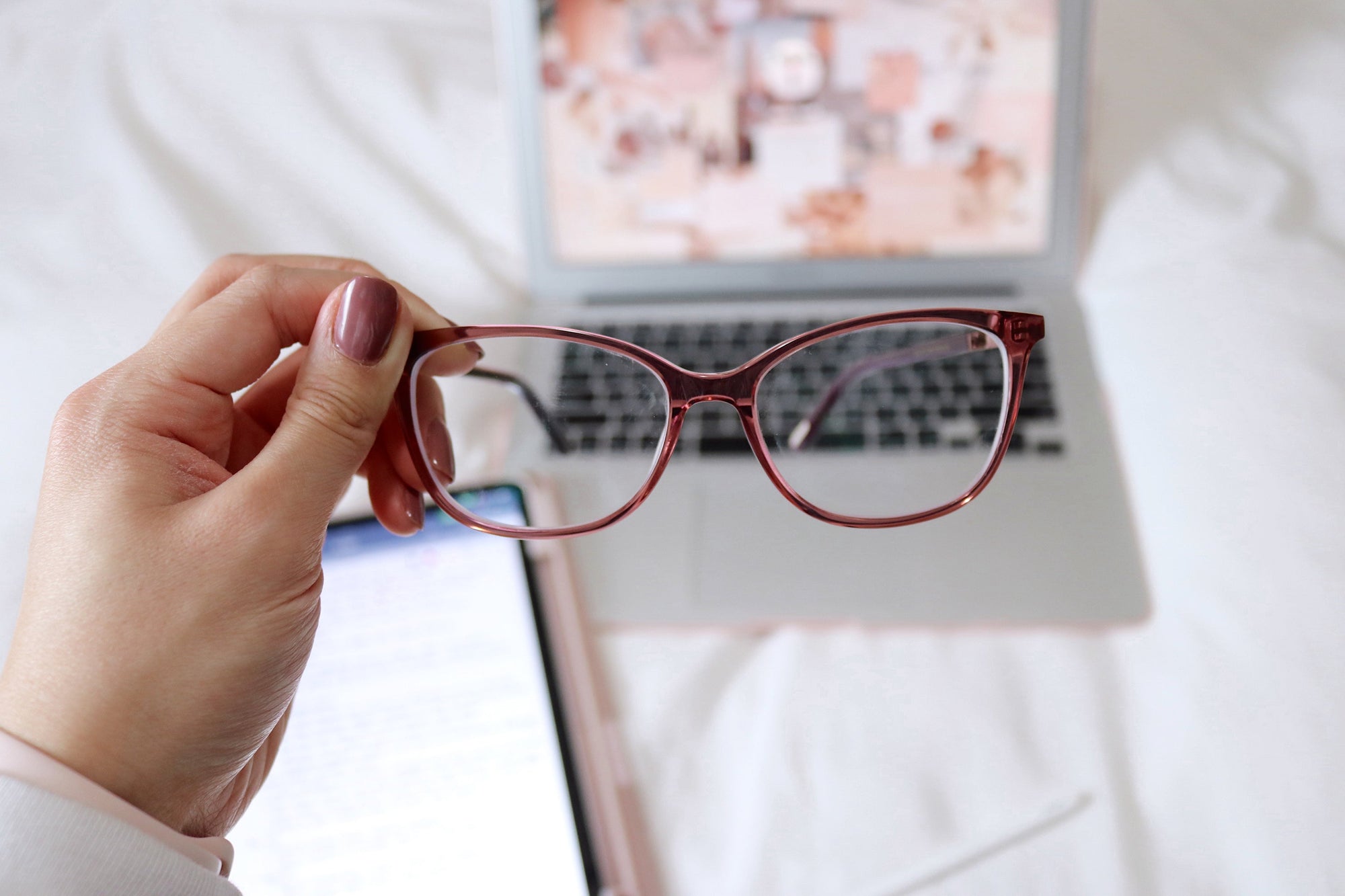SAFE HANDLER Duarte Premium Over The Glass Safety Glasses
Impact-resistant polycarbonate lenses are used. It fits most head sizes comfortably without slipping while providing comprehensive protection against industrial hazards. These glasses have shatterproof and high-impact lenses. The ultralight design encourages less slippage and reduces harm. Fully covered UV400 scratch-proof and fog-proof coating, providing the best protection. They are suitable for different environments, and weather conditions, including automobiles, construction, painting, laboratory work, etc.
When do you need prism glasses?
If you experience symptoms of headache, dizziness, and nausea, then these symptoms may be caused by a subtle disorder between the eyes. This situation is called Binocular Vision Dysfunction(BVD). Double vision occurs in the situation that light enters the eye at the wrong angle and sends two different images to the brain. Some people have diplopia, where they can see only one image, and flat images are often blurry. Prism glasses can help to change visual deformities. Prism lenses can be helpful to prevent myopia and farsightedness in both eyes. If vision deteriorates in one eye, the eye muscle can use an external corrective prism to prevent blindness. Standard glasses are made of a combination of prisms that can correct the focal length errors and corneal curvature. The prism moves the image up and down or left and right to form an overall view.
Difference Between Driving Glasses And Night Vision Goggles
The special effect of polarized glasses is to eliminate and filter the scattered light in the beam of light effectively so that the light can be put into the visual image of glasses with the right track, and the field of vision is clear and natural. The effect of night vision goggles is that they allow the wearer to observe the surroundings at night without being affected by light. For example, aviation accidents can be greatly reduced through the use of navigation winches equipped with forward-looking infrared cameras on aircraft and by requiring pilots to wear goggles fitted with night vision goggles.
Disadvantages of polarized sunglasses
Polarized sunglasses have many benefits. However, in some cases, non-polarized lenses are a safer choice. On cloudy days, drivers find that non-polarized sunglasses are better than polarized sunglasses due to the lack of glare and extreme sunlight.
Driving with polarized lenses after snowing can be dangerous for drivers. As the glare of polarized sunglasses is blocked, ice or snow on the road will not be visible. In this case, the advantages of polarized sunglasses will become the disadvantages that may cause accidents.
In addition, when driving along a dark road with few street lights at night, wearing polarized lenses will make it harder to see the road conditions because they dim the available light better than non-polarized glasses. Of course, in low-light conditions, it is best to avoid wearing sunglasses completely while driving.
The most significant disadvantage of polarized sunglasses is that they do not perform well on digital screens and displays. They can cause the images and information on the LCD screen to blur or disappear at certain angles. Don’t wear polarized sunglasses to use these devices while driving.
The origin of modern eyeglasses
The origins of modern glasses can be traced back more than 1,000 years. In the Middle Ages, the reading stones used by monks were glass spheres, sometimes filled with water and placed on objects to magnify them.Glassblowers in Italy created reading stones, similar to modern hand-held magnifying glasses. The reading stone can be placed on the wearer's nose or in front of the face. Later, Spanish craftsmen built the first cobra-framed temple in the 17th century. They tie ribbons or strings to the frames and tie them around the user's ear.
In the 18th century, Edward Scarlett created the first wearable glasses, providing more comfort for eyewear wearers. These early glasses had glass lenses embedded in heavy frames made of wood, lead, or copper. Natural materials of leather, bone, and horn were later used to make the frames. In the early seventeenth century, lighter steel frames were invented. As eyewear continued to evolve and prescription accuracy improved, the trend for eyewear to become more fashionable began. In the 18th century, bifocal lenses appeared, making it possible to correct upper myopia and lower presbyopia. Later glasses were designed to be fixed by a ribbon or by applying pressure to the bridge of the nose. In the 1980s, plastic lenses were introduced, providing a more durable alternative to glass lenses. Ultimately, the glasses used today are the result of centuries of technological and intellectual advances.
Advantages of aspheric lenses
In reality, aspheric lenses were originally born to improve the marginalized optical properties of spherical lenses. The aspheric lens with special coating treatment has perfect visual performance, with a clearer, more comfortable visual effect. You can hardly feel the presence of aspheric lenses when you put them on. So you can enjoy the ease brought by aspheric lenses. They are more natural and more realistic, having less visual distortion. The aspheric lens can be designed with a flatter base arc, which not only makes the appearance beautiful but reduces the peripheral magnification so that when others look at the eyes of the people who wear glasses, the size will not change much.
What Strength Reading Glasses Do I Need?
What strength reading glasses do I need? You can choose the reading glasses strengths by age or you can also perform a reading glasses test. If you are aging from 40 to 44, the +0.75 to +1.00 dioptre power is recommended. If you are aging from 45 to 49, the +1.00 to +1.50 dioptre is recommended. Age from 50-54, recommended power is +1.5 to +2.00 dioptre. Age from 55-59, recommended power is from +1.50 to +2.25 dioptre. Age from 61-65, recommended power is from +2.25 to +2.50 dioptre.
If you find two different strengths of reading glasses are available, choose the lower power because too strong strength can cause discomfort compared to weaker powered glasses and can even lead to nausea and dizziness.
So, if you need a pair of reading glasses, try Koalaeye Optical, which is an online glasses store. It provides all kinds of eyeglasses, sunglasses and frames. You can choose the satisfied one from here.











































